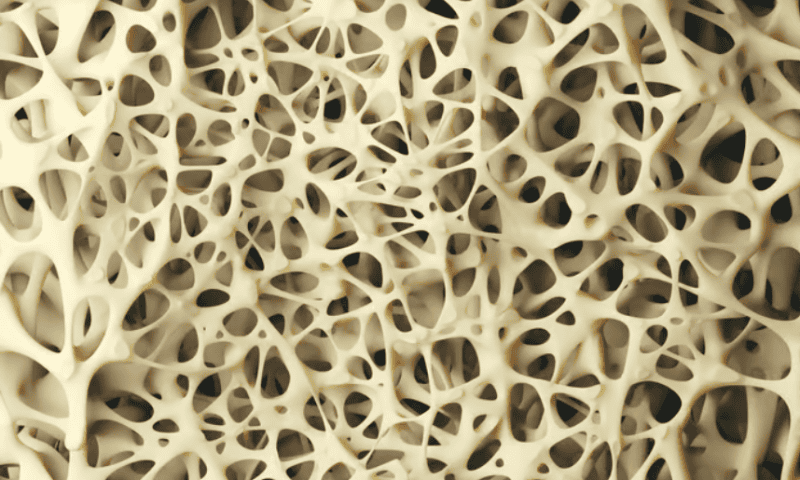In a development made possible with the help of artificial intelligence, a malaria drug appears to reverse bone loss from osteoporosis in mice.
Reporting in ACS Central Science on Oct. 18, researchers from China’s Peking University International Cancer Institute showed that the drug dihydroartemisinin (DHA) reduced bone loss in the femurs of mouse models of osteoporosis. It also preserved their bone structure.
“Bone-targeted delivery of DHA by … nanoparticles improves its therapeutic efficacy in osteoporosis,” the researchers wrote in the paper. “Collectively, DHA could be a promising therapeutic agent for treating osteoporosis by maintaining [bone stem cell] stemness.”
DHA is a derivative of a compound called artemisinin found in the sweet wormwood plant. Artemisinin and DHA were first identified as having antimalarial properties in 1972 by Tu Youyou, a pharmaceutical chemist who traveled around the country screening herbs used by practitioners of traditional Chinese medicine. DHA later became one of several artemisinin-derived compounds recommended for malaria treatment by the World Health Organization as part of combination therapies. She would later go on to share the Nobel Prize in medicine in 2015.
The scientists behind the new study didn’t have to travel around China to find out what compounds had anti-osteoporosis potential. Instead, they turned to a machine learning algorithm they had previously developed to elucidate how small-molecule drugs affect gene expression, which could help them find new ways to repurpose drugs.
But unlike the primary treatment strategies for osteoporosis, which slow bone breakdown—a process regulated by a type of cell called an osteoclast—the Peking University team decided to focus on reinforcing existing bone. To do that, they used their AI algorithm to see what compounds altered genes involved in the differentiation of bone marrow mesenchymal stem cells (BMMSCs) into osteoblasts, which build bone up.
Using the algorithm to assess what compounds impacted BMMSC-related gene expression in newborn and adult mice revealed DHA as a potential hit. To evaluate the drug’s effects on bone, the researchers gave mice with osteoporosis extracts of the drug orally each day for six weeks. By the end of the period, they had lost less bone and had healthier bone structure than untreated mice.
Next, to improve delivery to the BMMSCs, the researchers packaged DHA into nanoparticles called MSN-ALN, which had been specially designed to target bone. This treatment was injected into mice with osteoporosis, this time once a week for eight weeks.
At the end of the study period, the animals’ bones were of nearly the same quality as healthy controls and looked much better than untreated mice with osteoporosis. On top of that, they showed no signs of toxicity from the treatment. Additional experiments confirmed that the protection came from the drug helping BMMSCs differentiate into osteoblasts.
This is the second therapy in the past couple months to show preclinical efficacy against bone loss. In September, researchers from the University of California, Los Angeles revealed that a bone drug called BP-NELL-PEG protected mice aboard the International Space Station from microgravity-induced bone remodeling.

